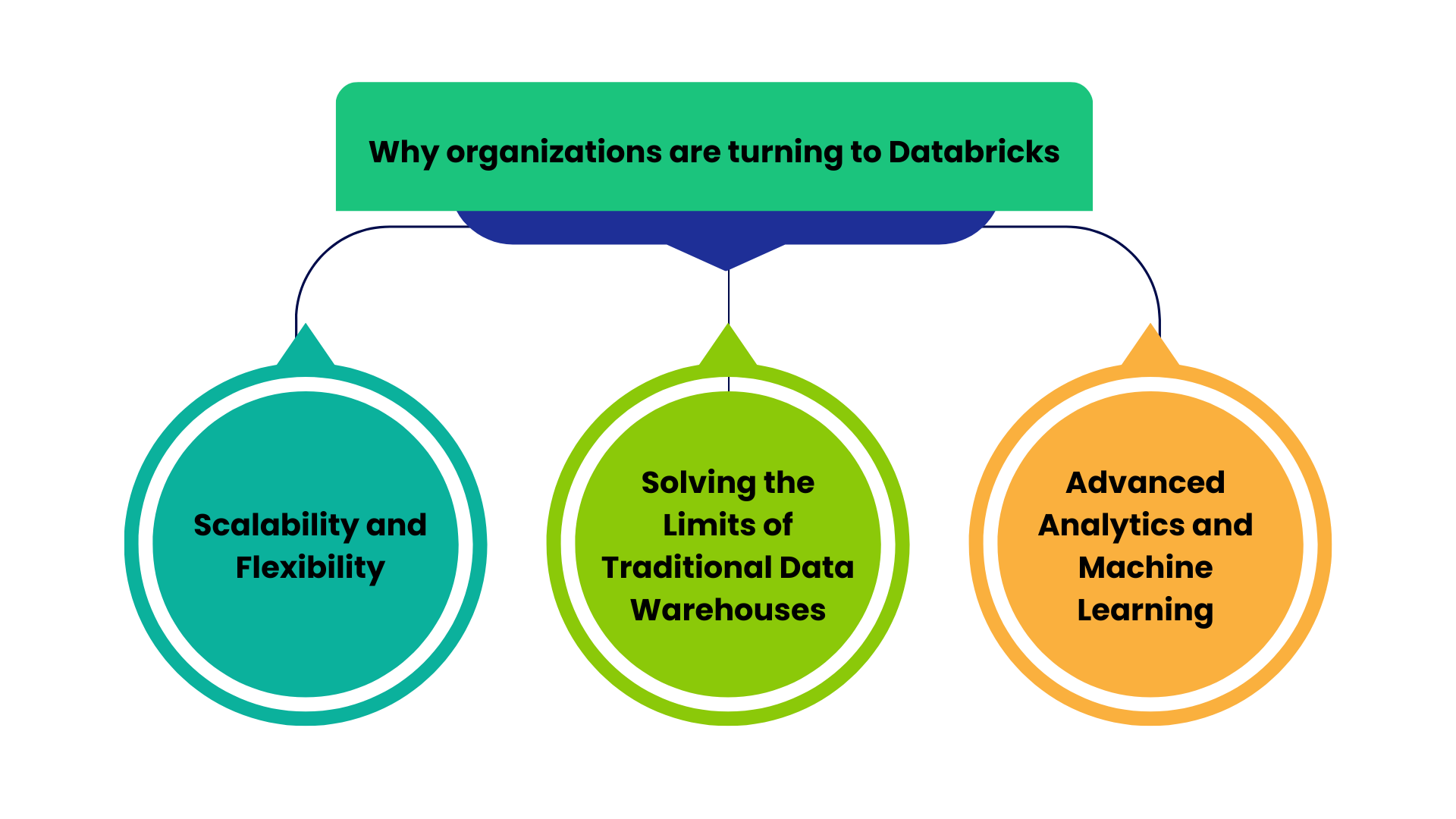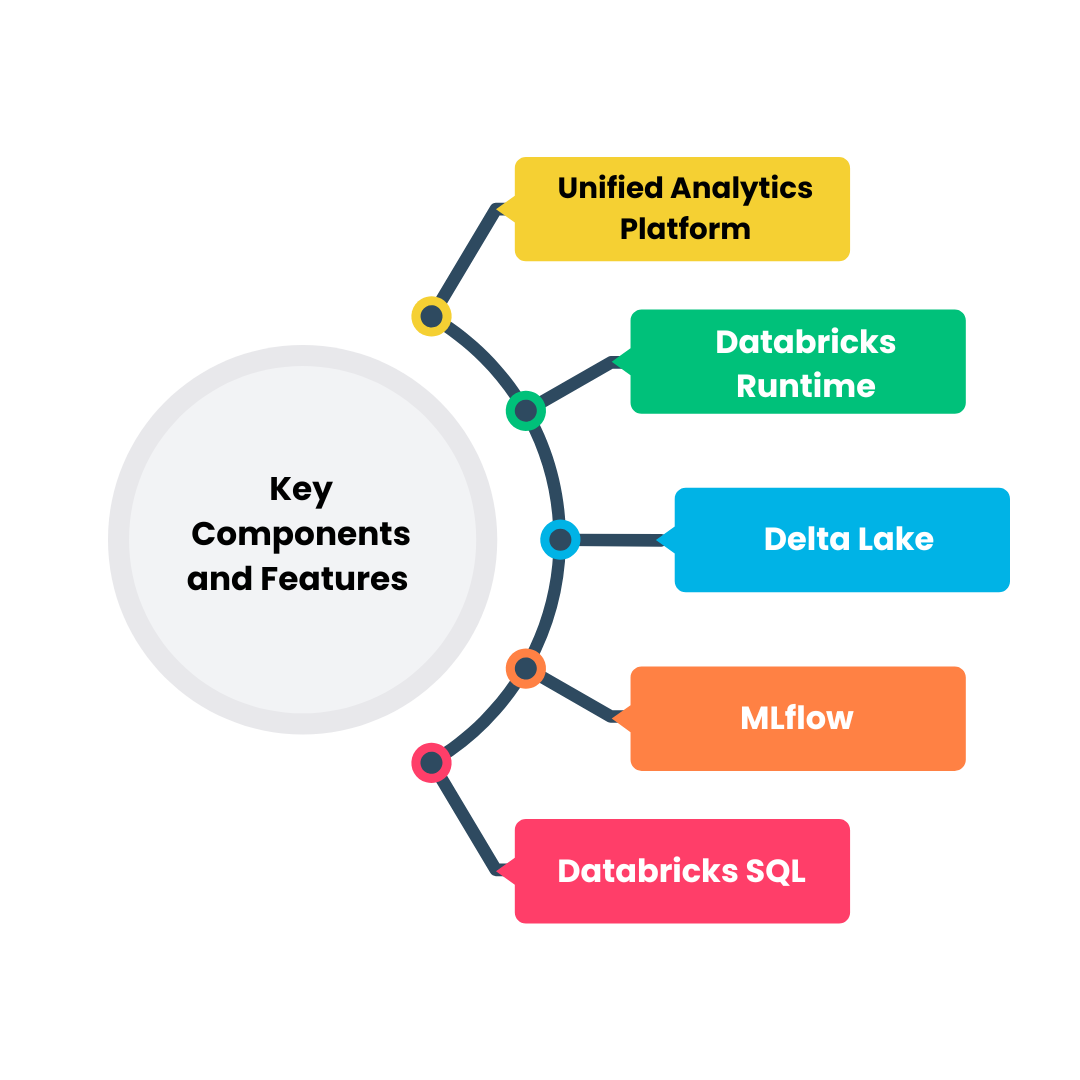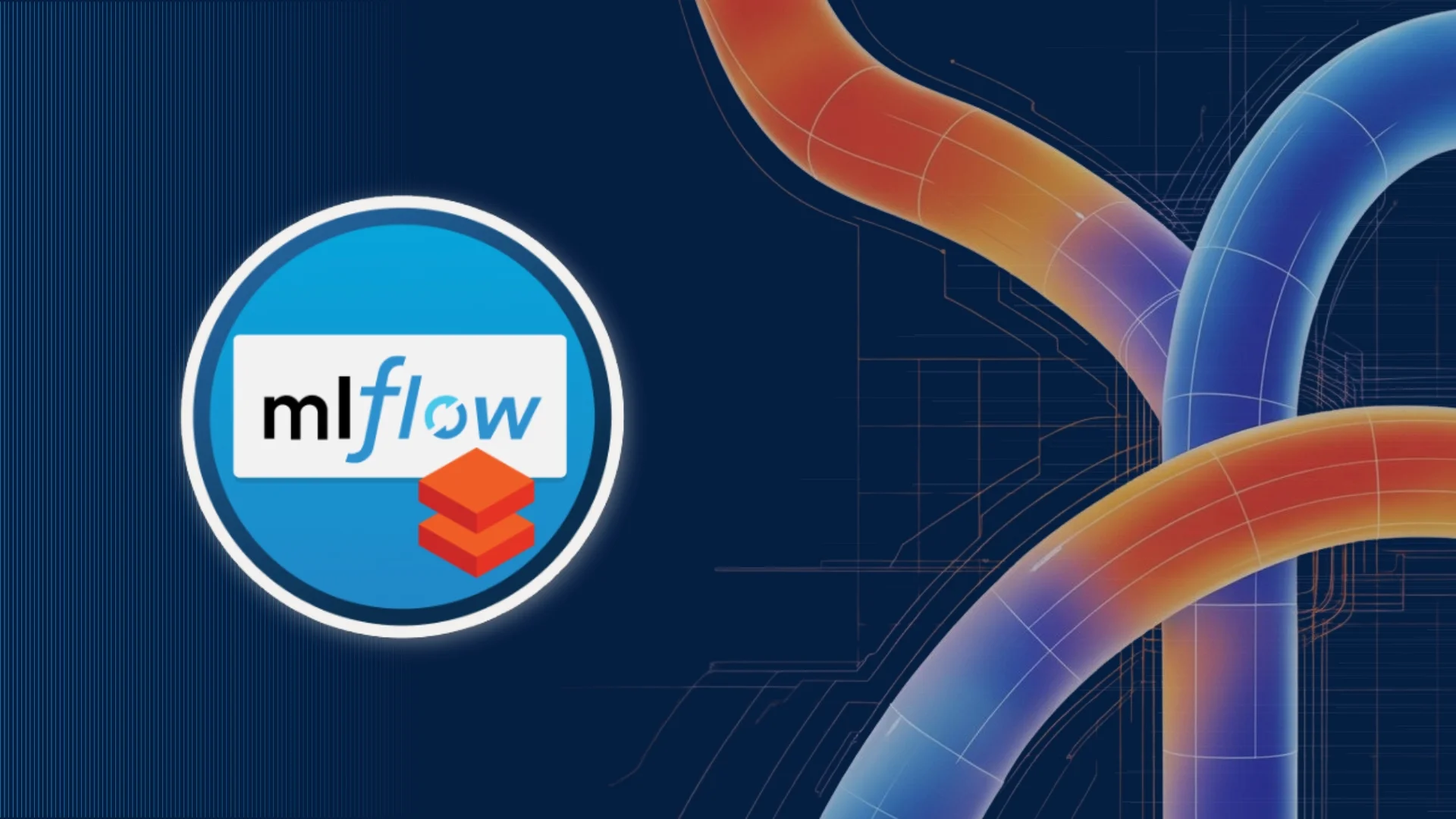For years, Traditional data warehouses have been used by organizations to store and analyze structured data. They’ve helped generate reliable reports, power dashboards, and support decision-making based on historical trends. However, the world today has changed. Businesses today are dealing with massive amounts of increasingly varied data from real-time social media feeds, event logs, sensor logs, sensor data, video, and unstructured text.
Despite the strengths of these traditional systems, they are not designed for this level of complexity. They require heavy ETL processes, struggle with unstructured data, and in many cases restrict organizations from utilizing any modern use cases such as machine learning and real-time analytics.
This is where Databricks lakehouse plays a major role. With its Lakehouse architecture, it combines the flexibility of data lakes with reliability of traditional data warehouses. Databricks lakehouse is built on Delta Lake and Apache Spark, it lets teams store all types of data in one place, work with it in real time, and run everything from simple reports to advanced Al models all of this is possible without creating data silos or duplication.
Why Traditional Data Warehouses Are No Longer Enough
A traditional data warehouse is a central system where all the business data is integrated including sales records, customer information, inventory logs, and etc collected from different tools and departments. The primary goal of this warehouse is to make it easier for teams to run reports, spot trends, and make data-driven decisions.
Traditional Data Warehouses are usually hosted on-premises, which requires setting server rooms, purchasing hardware, and hiring IT staff to maintain and manage everything. While this setup gave businesses control over their data, but it also required significant time, resources, and effort to scale or upgrade.
However, with growing data there are certain limitations that impact the functioning of businesses.
- The Evolving Needs of Modern Businesses
In the Modern era of the developing world, every organization is looking to use the data and generate the reports, looking to unlock real-time insights, and personalize customer experiences, Additionally, the demand for enabling predictive analytics through AI and machine learning is also increasing. This shift has introduced several new demands:
- Data Variety: Businesses are now dealing with a mix of structured, semi-structured and unstructured data coming from diverse sources like social media, IoT devices, web logs and APIs.
- Speed: The need for real-time and near-real-time insights is increasing and the concept of waiting hours or days no longer exists.
- Scalability & Flexibility: The speed of data volumes has increased from GB to TB and now PB and it is essential for infrastructure to scale without any down time.
- Advanced Analytics: Companies are now increasingly adopting the ML and AI directly, which traditional warehouses are not built to support efficiently.
Table of Contents
- Why Traditional Data Warehouses Are No Longer Enough
- Limitations of Traditional Warehouses:
- The Rise of Modern Data Solutions: Databricks Lakehouse Platform
- Why Databricks Lakehouse Platform?
- The Challenges with Scaling Traditional Data Warehouses
- Limitations in Flexibility and Integration Capabilities
- Cost Implications and Resource Allocation
- Performance Issues and Real-Time Data Processing Needs
- Embracing the future with Databricks Lakehouse Platform
Limitations of Traditional Warehouses:
While Traditional warehouses have been served businesses many decades, their architecture and design are increasingly becoming outdated in today’s fast-paced, data-intensive environment.
Here are some limitations
- Rigid Schema: Under Traditional Data Warehouse the data needs to fit a predefined structure, and this makes it hard to adapt to new or evolving data sources.
- Poor Support for Unstructured Data: Limited to structured data, and struggle with JSON, images or logs types of formats.
- Scalability Issues: The cost and difficulty level are high when storing and computing large volumes of data.
- Batch-Oriented Processing: The analytics systems are designed to perform scheduled, batch-based data loads only and real-time analytics become challenging.
- Limited Advanced Analytics: Not suitable for machine learning or AI workloads, which requires data movement to external tools.
- High Cost of Ownership: The costly licensing, hardware, and maintenance represent a burden to manage for on-premise solutions.
The Rise of Modern Data Solutions: Databricks Lakehouse Platform
As the data continues to grow in 3V’s i.e. Volume, Variety and Velocity, the organization need solutions that are not available in the Traditional Data Warehouse. Hence, cloud-native platforms like Databricks have emerged to meet evolving needs, enabling faster insights, scalable processing and unified data workflows.
Key Components and Features:
- Unified Analytics Platform: Databricks serves as a unified platform for data engineering, data science, machine learning, and analytics, which can slow down your projects.
- Databricks Runtime: Databricks runtime is powered by Apache Spark, helps improve performance and scalability of interacting data, allowing for rapid processing of large datasets.
- Delta Lake: An open-source storage layer that brings reliability to data lakes. Delta Lake provides ACID transactions, scalable metadata handling, and the capability to unify streaming and batch data processing.
- MLflow: An open-source platform that can manage all aspects of the machine learning lifecycle from experimentation to reproducibility and deployment.
- Databricks SQL: Provides the capabilities to analyze data by the means of SQL queries, dashboards, and reports to data analysts and business users.
Why Databricks Lakehouse Platform?
As businesses generate more data than ever before, they need platforms that are scalable, flexible, and efficient. Traditional data systems often offer limited scalability, excessive costs to maintain, and rigid infrastructure. Databricks Lakehouse is a great alternative that is capable of handling the complexities of modern data processing.
Here’s why organizations are turning to Databricks Lakehouse:

1. Scalability and Flexibility
Databricks Lakehouse is built for the cloud. Its cloud-native architecture allows organizations to dynamically scale their data workloads based on demand. With auto-scaling clusters, elastic compute resources, pay-as-you-go pricing, and other features, teams can achieve performance and manage cost predictions.
2. Solving the Limits of Traditional Data Warehouses
Traditional data warehouses often fall short when it comes to scaling and managing modern data volumes. They can be expensive to maintain and aren’t always designed for real-time processing. Databricks Lakehouse addresses these issues by offering a unified platform that supports both batch and real-time analytics. This helps teams get faster insights, reduces complexity, and allows them to focus on generating value from data rather than managing infrastructure.
3. Advanced Analytics and Machine Learning
The biggest distinction for Databricks is they support advanced analytics and machine learning (ML) inherently. It is a natural integration with common ML frameworks and allows data science teams to leverage large datasets and build models while thinking through your innovation much faster.
The Role of Databricks Lakehouse in Modern Data Architectures
Databricks Lakehouse plays a key role in today’s complex data architectures, especially with its support of the Lakehouse architecture which combines data lakes and data warehouses using the best of both.
Key Contributions of Databricks:

Unified Platform:
Databricks Lakehouse offers a unified platform that integrates data engineering, data science and analytics within an end-to-end environment that eliminates data silos and enables collaboration across teams.
Lakehouse Architecture:
By unifying the flexibility and scale of data lakes and the reliability and performance of data warehouses (via Delta Lake), Databricks provides one architecture that serves as the source of truth for all data workloads.
Multiple Workloads:
Databricks Lakehouse is architected to support all types of workloads, from real-time data streaming to batch ETL, and from business intelligence dashboards to complex machine learning models, all in one single, integrated platform.
Cloud-native and able to scale:
Databricks Lakehouse is designed for the cloud and enables organizations to scale their resources up or down as necessary. The architecture of Databricks is optimized for performance as well as cost, making it well aligned to any organization’s cloud-first strategy.
Open and Interoperable:
Databricks lakehouse runs on a rich ecosystem of open-source technologies, including Apache Spark, Delta Lake, and MLflow. It leverages all of the major cloud providers and tools, allowing for maximum flexibility without vendor lock-in.
With businesses advancing towards a data-driven reality the weaknesses of the traditional data warehouses become clearer. They can no longer afford to stagnate and migrate to a modern data platform like Databricks is no longer just an option, but the best way to scale their business in this competitive landscape.
The Challenges with Scaling Traditional Data Warehouses
With the data-driven world moving quickly, the growth of data is limitless. Storing this data without any downtime is crucial for businesses. Traditional data warehouses have difficulty providing a service for fast-needs for massive growth.
While, Databricks lakehouse is efficient in successfully storing and processing data elasticity. This means it can seamlessly handle different data volumes, integrate various data types and workloads, and ensure continuous data availability without any limitations.
Limitations in Flexibility and Integration Capabilities
Traditional Data Warehouses are not flexible and expensive. They primarily handle structured data, struggle with diverse data types, and offer limited integration with modern sources, often requiring complex batch processes. Their high operational costs stem from expensive licenses, on-premise hardware, and large maintenance teams.
Databricks lakehouse provides flexibility and cost efficiency. The Lakehouse can deal with any data type or data workload with a broad integration ecosystem and real-time data ingestion. Being cloud-native and consumption-based, Databricks lakehouse reduces operational overhead, eliminating hardware costs and minimizing the need for large, specialized teams.
Cost Implications and Resource Allocation
Traditional data warehouses involve high operational costs right from expensive licensing, dedicated on-premise hardware, ongoing maintenance, and the large teams required for maintenance.
Databricks lakehouse helps gain operational efficiencies in those costs. It’s a cloud-based, consumption-based service, which means there are no upfront hardware costs, ongoing maintenance, or on-premises management. Cloud-native auto-scaling and serverless options also cut the burden of managing constant changes in dedicated, specialized management teams, resulting in a much more efficient and predictable cost structure.
Performance Issues and Real-Time Data Processing Needs
Traditional Data Warehouses often face performance issues with large data volumes and are designed for batch processing, leading to data latency. Their inability to process data immediately leads to lacks of Real-time insights.
Databricks lakehouse offers superior performance and excels in real-time data processing. Built on Spark, it handles massive datasets quickly and natively supports streaming, enabling immediate insights from fresh data with elastic scalability.
Embracing the future with Databricks Lakehouse Platform
The data landscape has changed and along with it, the expectations for how businesses manage, process, and use information. Data Lakes, Data Warehouses, and other traditional solutions were all designed to address specific and limited data needs, but are incapable of supporting the volume, speed, and complexity most organizations require today.
In contrast, Databricks lakehouse represents a paradigm shift innovative, unified, scalable and intelligent. It offers organizations a platform designed for the cloud, where silos between data engineering, analytics and machine learning have been broken down, so organizations can move faster, collaborate smarter, and innovate constantly.
As organizations become aware of the limitations legacy systems and solutions imposed on their data strategy the capabilities offered through Databricks lakehouse certainly present a way forward. The future of data isn’t just about managing it, but maximizing its value.















